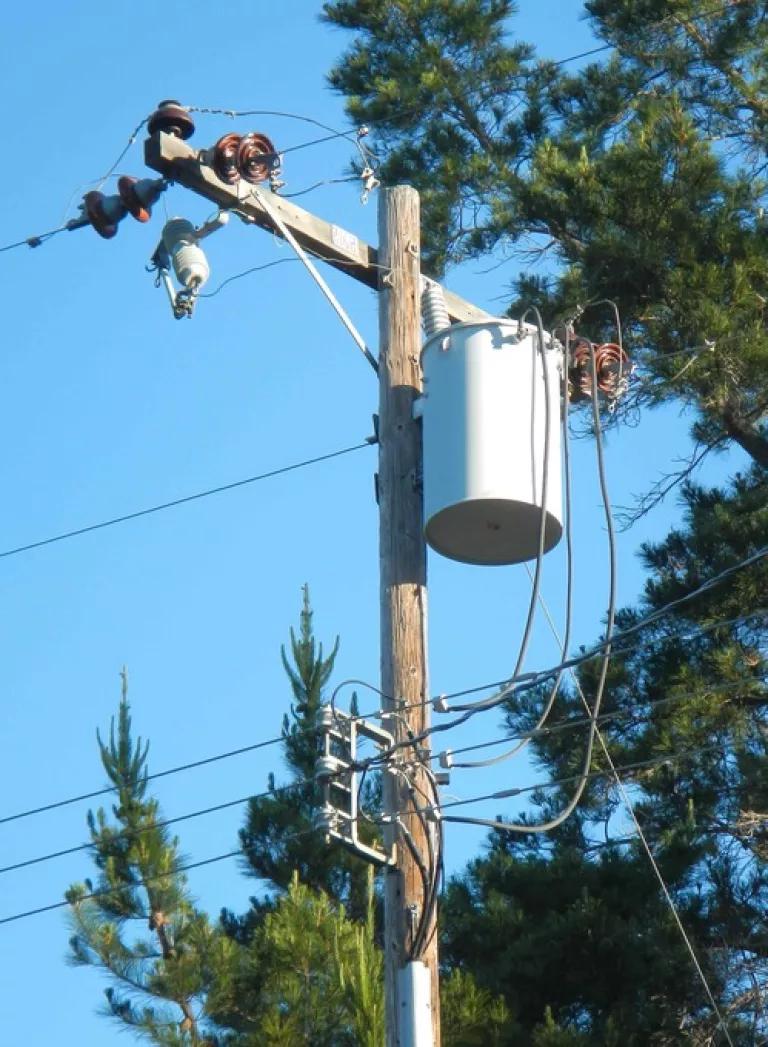The federal government yesterday issued new efficiency standards for the electricity distribution transformers that bring power to every U.S. home and business. The new standards are an important step in the right direction, although far greater savings are achievable. To achieve the maximum cost-effective energy savings, DOE will need to revisit the standards in the next few years, as the industry adjusts to making higher efficiency products.
The new standards, developed by the U.S. Department of Energy, apply to the metal boxes mounted on utility poles and installed in buildings to reduce the higher voltages on the distribution network to the 110 or 220 volts used by appliances and equipment. Because nearly all electricity from the national power grid flows through one of the 40 million such transformers nationwide, even small increases in efficiency add up to large savings.

The new standards stem from the Department of Energy’s 2009 agreement to settle a lawsuit that the Natural Resources Defense Council filed together with Sierra Club, Earthjustice and several states, in which we challenged the Bush Administration’s weak energy efficiency standard for transformers. The states of California, New York, Connecticut, and New Jersey and the city of New York filed a similar suit.
NRDC, together with the Appliance Standards Awareness Project, the American Council for an Energy Efficient Economy and others, supported even stronger transformer efficiency standards, noting that would save even more energy, money and emissions. DOE’s analysis shows that the standards DOE adopted will save about 3.6 quadrillion Btus (quads) and net consumers about $13 billion while reducing CO2 emissions by about 260 million metric tons over thirty years, which is great. But DOE also found that stronger standards would have more than doubled energy savings to about 8.2 quads, while delivering $25 billion net cost savings and reducing emissions by 600 million metric tons. (For context, the United States currently uses for everything – electricity, heating, transportation, industry – is about 100 quads each year.)

That's a lot of potential savings left on the table. As we understand it, a main concern of DOE was that some US manufacturers would not be able to upgrade their products and processes fast enough to meet the most highly efficient cost-effective performance levels. There's no way to know for certain if that is right, but it is clear that some US manufacturers already do perform at that level and that the technology is well-developed. It's also clear that international competitors are rapidly advancing on the highest performance technologies. It will be important for DOE to revisit the standards soon, and see whether US manufacturers can rise to the challenge of fully delivering consumer and energy savings.
While it's disappointing that the standard leaves so much potential on the table, it is still good to see progress from DOE. The efficiency standards issued yesterday are the first to emerge from DOE in almost a year. Seven other federal efficiency standards are overdue that will save energy and customer bills for other equipment and appliances ranging from microwave ovens to electric motors. DOE must move quickly on these with Dr Moniz at the helm, as each day of delay costs consumers and businesses about $10 million in lost savings, and produces over one hundred thousand metric tons of needless global-warming emissions, according to analysis by the Appliance Standards Awareness Project.



